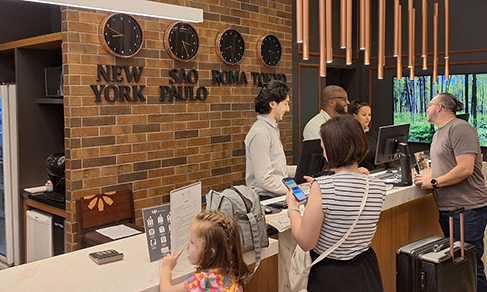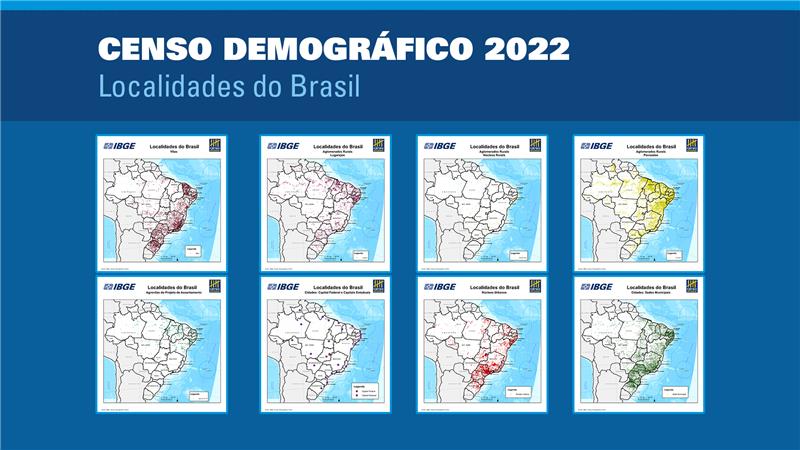PNAD TIC
Digital TV advances, but subscription channels are still seen as expensive
April 29, 2020 10h00 AM | Last Updated: April 30, 2020 01h58 PM

The use of television by the Brazilian population has been going through changes and income has had a direct impact on people's consumption habits. Tube television sets have been increasingly replaced by thin-screen ones - equipped with a digital converter – and the number of homes receiving a digital TV signal reached 86.6% in 2018, versus 79.8% in 2017. On the other hand, the proportion of housing units receiving a broadcast TV signal from a parabolic antenna has decreased, as well as the proportion of homes with subscription TV, a service still considered expensive by 51.8% of the families.
These results are found in the Continuous National Household Sample Survey (Continuous PNAD), which investigated, in Q4 2018, the access to Information and Communication Technology (ICT). For the first time, the survey has encompassed data about average income and how it relates to the different types of ICT services.
The IBGE's labor and income coordinator, Maria Lucia Vieira, says there is a positive correlation between income and the possession of some goods. “Housing units with a thin-screen TV set have higher earnings than those with tube television ones. Access to digital TV itself also varies according to income. In housing units with subscription television, a more expensive service, income per capita is higher than in housing units where the service is provided by means of a parabolic antenna. Location is also relevant. In rural areas, it is cheaper to install a parabolic antenna than cables for subscription television”, the coordinator says.
In 2018, considering the 71.7 million permanent private housing units in the country, 96.4% had a TV set, versus 96.7%, in 2017, thus repeating a trend to slight decrease previously observed in 2016. The income of housing units without a TV set (R$ 954) amounted to 58.9% of the income of housing units with the appliance (R$1,620).
The North Region keeps the smallest percentage of housing units with a television set, in overall terms (92.3%). The Southeast remains with the highest figure in the indicator overall (97.8%) and in urban areas (97.9%), whereas in the rural area, the highest percentage was that of the South Region (96.0%).
Use of the digital converter records increase
Maria Lucia Vieira observes that, from 2012 on, Brazil started to produce thin-screen TV sets equipped with a digital converter. PNAD indicates that the number of housing units with a thin-screen TV increased from 49 million to 53 million (from 69.8% to 74.3%) and those with tube TV sets fell from 27 million to 23 million (from 38.8% to 31.9%) from 2017 to 2018.
Migration between the two types of appliances has increased fast. Those which had only a thin-screen television set amounted to 52.3%,; in 2016, that figure increased to 57.9%, in 2017, and it reached 64.5%, in 2018. The percentage of housing units which had only a tube television set was 32.2%, in 2016; it fell to 27.0%, in 2017, and to 22.1%, in 2018.
“The concentration of housing units which had only a TV set is highest in the North and Northeast Regions. And the average income is lower (R$ 1,008) than in the housing units that have only a thin-screen TV (R$ 1,875)”, remarks Alessandra Scalioni Brito, analyst from the IBGE's Department of Labor and Income.
Digital TV is present in 90% of the urban housing units with a television set
In 2018, there were 59.8 million housing units with a TV set equipped with a digital TV converter: an increase from 79.8% in 2017, to 86.6%, in 2018. In urban areas, there was an increase from 83.7% to 89.9%; the rural area, however, had the most significant migration figures, with an increase from 53.5% to 64.1%.
“The main increase in the adoption of a converter took place in housing units that had a tube television set, with a change from 41.8% to 54.9%. In turn, almost 100% of the appliances with a thin-screen TV set have a converter, a percentage that changed from 94.7% to 96.0%”, Alessandra Scalioni adds.
In 2018, there were still 2.14 million housing units without an option to receive the digital TV channel. That encompasses housing units without a converter which did not receive TV signals by means of a parabolic antenna either or did not have subscription television services. The figure fell from 6.2% to 3.1%, from 2017 to 2018. “That varies from region to region. In the North, the figure corresponds to 4.5% of the housing units with a TV set, in the Northeast, to 4.5%, in the Southeast, to 2.2%, in the South, to 2.9% and in the Central West, to 2.7%. The complete disconnection of the analogical system was postponed from December 2018 to 2023”, Maria Lucia Vieira highlights.
Access to televison by parabolic antenna records decrease
The survey indicates a decrease in the percentage of housing units with signal from a parabolic antenna, from 32.4% to 30%. There were decreases both in the urban (from 26.8% to 24.6%) and in the rural areas (from 70.5% to 66.7%). By area, the biggest concentration of housing units with a parabolic antena is found in the Northeast (43.8%) and North (41.0%).
The average real per capita income of housing units with a television set and signal from a parabolic antenna (R$ 1,160) was lower than that of housing units with a television set withou that type of antenna (R$ 1,817).
Maria Lucia Vieira highlights that, whereas parabolic antennas are more common in the rural area, the urban area has a bigger presence of subscription TV. PNAD TIC identified a slight decrease in the reduction of the percentage of housing units with a subscription TV, which changed from 32.9% to 31.8%. Decrease occurred in the urban area (from 35.6% to 34.3%) and there was slight increase in the rural area (from 14.1% to 14.9%)
The Southeast still holds the biggest percentage of housing units with subscription TV in overall terms (41.4%), in urban areas (42.2%) and in rural areas (28.4%), whereas the Northeast kept the lowest overall figure (17.6%) and in urban areas (20.5%). The North Region had the lowest figure in rural areas (7.8%).
“In relation to reasons for the non-adoption of TV subscription services, 51.8% consider the service expensive and 42.5% have no interest in it, mainly in the South and Southeast regions”, Maria Lucia Vieira says.
Together, these two mostly appointed reasons encompassed 94.3% of the housing units with a TV set without subscription TV services. But the percentage of those without access to subscription TV because the videos (shows, films or series) accessed by the Internet replaced subscription services amounted to 3.5%; on the other hand, those without the service due to lack of availability in the location of the housing unit were only 1.6%.
The survey also shows that TV subscrition services is highly dependent on income. Average real per capita income of housing units that had subscription television (R$ 2,721) surpassed that of housing units without that type of service (R$ 1,106). In the rural area, those without access to TV subscription (R$ 726) represented 60.7%, of the income of housing units with acces to that type of service (R$ 1,197). That percentage was 41.8%, in urban areas (R$ 1,178 versus R$ 2,818).
“Compared with signal services revceived from a parabolic antenna, the income of hosusing units (R$ 1,160) was 42.6% of those with subscription TV services (R$ 2,721). That occurs because, whereas subscription TV has to do with a population that can pay for it, parabolic antenna is a real necessity in aeas with no access to TV signal”, Alessandra concludes.

















